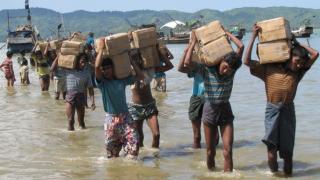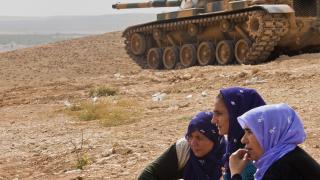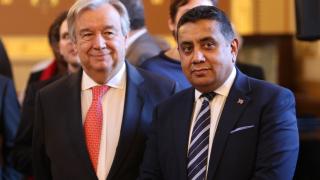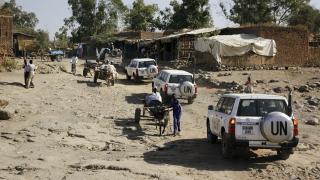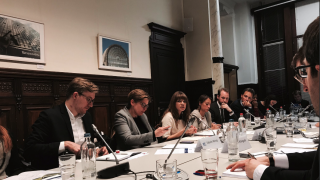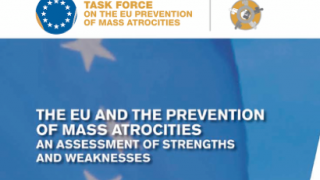
With the Syrian crisis ever deepening, with civilians bearing the brunt of a fatalities list that sits inside the ‘mid-to-high tens of thousands’ bracket, and with one million people having already fled the country (as per UN statistics of 6 March), there is hardly a better time to discuss how civilians can best be protected in situations of conflict, or how those situations may be avoided in the first instance.
The death toll and the numbers of those displaced is scarcely fathomable to most modern imaginations and does little justice to the ever escalating civilian suffering in the country. As António Guterres, United Nations High Commissioner for Refugees, stated in January of this year:
“The children pay the hardest price of all. In schools we visited, the drawings show bombs, weapons and dead bodies. Thousands of young lives have been shattered by this conflict. The future generation of an entire country is marked by violence and trauma for many years to come”.
The suffering occurring now will continue and will deepen and gouge the life from a generation. Atrocities have been perpetrated by all parties to the conflict, and have eroded that sentiment much promulgated in the years after Rwanda and other tragedies, that of ‘never again’. And yet here we are, and ‘never again’ has become ‘yet again’.
It is against this dark backdrop that a report, The EU and the Prevention of Mass Atrocities – An Assessment of Strengths and Weaknesses was launched in Brussels on 6th March by the Task Force on the EU Prevention of Mass Atrocities, a group of academics and practitioners coordinated by the Budapest Centre for the International Prevention of Genocide and Mass Atrocities. Established to contribute to the EU’s efforts to translate its general commitment to the responsibility to protect into practice and make the prevention of genocide and mass atrocities a priority of EU foreign policy, the report assesses current institutional capacities and political support and assesses how both might be strengthened.
The report launch was attended by UNA-UK’s Peace and Security Programmes Manager, James Kearney, who questioned panellists – including one of the authors, Professor Christoph Meyer of Kings College London, Ms Malgorzata Wasilewska (European External Action Service) and Mr Adama Dieng, Special Adviser to the Secretary-General on the Prevention of Genocide – on how the EU could distil enough political cohesion to develop military capabilities that would enable the EU to respond to desperate situations. As outlined in the ‘Third Pillar’ of the Responsibility to Protect principle, at its most extreme this could amount to the use of military force to protect civilians, particularly in situations where diplomacy and other coercive means, such as the use of sanctions, had failed. As another panellist, German politician Elmar Brok, stated, we [the EU] must build a “shield against this [atrocities against civilians]”, something the report seeks to address in terms of how EU capabilities might be galvanised.
After this, the European launch, the report will be unveiled in European capitals, including London on 26 March, when UNA-UK will be represented by James Kearney on the launch panel at the London School of Economics. UNA-UK continues to work with the Task Force as part of its R2P programme, and the report has been conveyed to the EU’s External Action Service.
For more information on UNA-UK's Responsibility to Protect (R2P) programme, please contact Alexandra Buskie, R2P programme officer, at buskie@una.org.uk or on 020 7766 3445.


